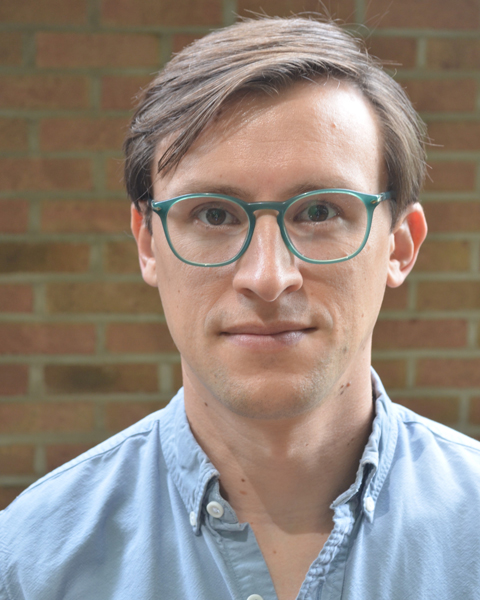Affiliation: Binghamton University (SUNY)

David W. Mixter is Research Assistant Professor for the Environmental Studies Program and Department of Anthropology at Binghamton University SUNY. He received his Ph.D. and A.M. in Anthropology from Washington University and his B.A. from Yale University. His research interests include archaeology of urban landscapes, origins of hierarchy, societal collapse and resilience, collective memory, intracommunity power dynamics, resistance, integrating multiple scales of analysis, and the Ancient Maya. He is the Field Director for the Actuncan Archaeological Project in Belize, and the GIS Specialist for the Altiplano Agriculture and Communities Project in Peru. Professor Mixter’s recent publications include “Community Resilience and Urban Planning during the Ninth-Century Maya Collapse: A Case Study from Actuncan, Belize” in Cambridge Archaeological Journal (2020), and (with K. Fulton) “The Domestic Landscape and Household Resilience at Actuncan, Belize” in Paleolandscapes in Archaeology: Lessons for the Past and Future M.T. Carson, ed., in press).
What does it mean to live among ruins?
Now seen as ruined, forest-covered pyramids and devoid of residents, ancient Maya cities are easy to see as exotic, mysterious, empty places. However, archaeology has shown that Maya cities were densely populated metropolises inhabited by kings, courtiers, craftspeople, merchants, and farmers. Through maps and architectural reconstructions, archaeologists can imagine Maya cities as lived in places by looking at how people moved around and where people may have gathered for celebrations, markets, and socialization. Yet, these visions are two-dimensional and see the Maya city as either ruined, as in the present, or vibrant. In truth, Maya cities were occupied for long periods of time, often millennia. Like all long-lived cities, the layouts we see today are not the product of a single coherent plan, but rather iterative decision-making. Residents lived in a historic center in which monuments, houses, and public spaces were built, occupied, renovated, and differentially abandoned. Similarly, the daily experience of these spaces would have changed as once-vibrant zones filled with garbage, closed store fronts, and abandoned houses or as impoverished areas were renovated and revitalized.
Like the Maya, people today are challenged by the built remains of the past as cities grow and develop. American cities, including Binghamton, NY where I live, are forced to grapple with the decaying remains and environmental legacy of our country’s industrial past. This presentation draws on modern strategies for managing long occupied cities–places like Rome, post-industrial America, and Nuremberg, Germany–to help understand how layered histories impacted ancient Maya lives and urban development.
Short bibliography and/or website on lecture topic:
Gordillo, Gastón R. 2014. Rubble: The Afterlife of Destruction. Duke University Press.
Halperin, Christina T. 2014. Ruins in pre-Columbian Maya urban landscapes. Cambridge Archaeological Journal24:321–344. DOI: 10.1017/s0959774314000626.
Low, Setha M. 2000. On the Plaza: the Politics of Public Square and Culture. University of Texas Press, Austin.
Macdonald, Sharon. 2010. Difficult Heritage: Negotiating the Nazi Past in Nuremberg and Beyond. Routledge, London.
Mixter, David W. 2020. Community Resilience and Urban Planning during the Ninth-Century Maya Collapse: A Case Study from Actuncan, Belize. Cambridge Archaeological Journal:219–237. DOI: 10.1017/S095977431900057X.
Stanton, Travis W., and Aline Magnoni (editors). 2008. Ruins of the Past: The Use and Perception of Abandoned Structures in the Maya Lowlands. University Press of Colorado, Boulder.
In the southern Maya Lowlands, the 9th century featured a major political and demographic collapse precipitated by a combination of elite overreach, expanding warfare, disruption of trade networks, and an increasingly unstable climate. At this time, most communities that survived in place and were forced to negotiate new forms of political authority and legitimacy. In this talk, I present the ancient Maya site of Actuncan, located in western Belize as a case study of collapse-era survival and transformation. Excavations, activity area analysis, and urban planning data from Actuncan, located in western Belize, indicate that the local community transformed their political institutions—abandoning the hierarchical system of divine kingship in favor of an inclusive political system that was largely disentangled from religious precepts. This is just one of several strategies adopted by communities in the upper Belize River Valley region. Based on this case study and nearby data, I argue that 9th century Maya sociopolitical was an inherently local process, anchored in communities’ deep-rooted social traditions and memories of their past.
Short bibliography and/or website on lecture topic:
Mixter, David W., 2017. Political Change Expressed in Public Architecture: The Terminal Classic Maya Civic Complex at Actuncan, Belize. Research Reports in Belizean Archaeology 14: 65–75.
Mixter, David W., 2020. Community Resilience and Urban Planning during the Ninth-Century Maya Collapse: A Case Study from Actuncan, Belize. Cambridge Archaeological Journal: 219–237.